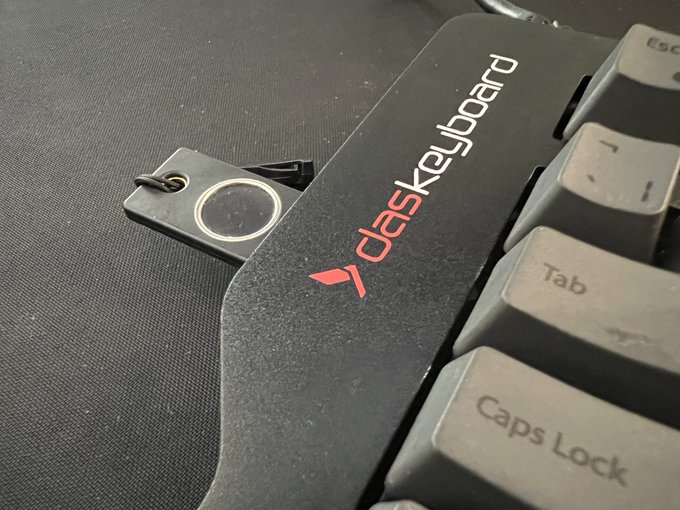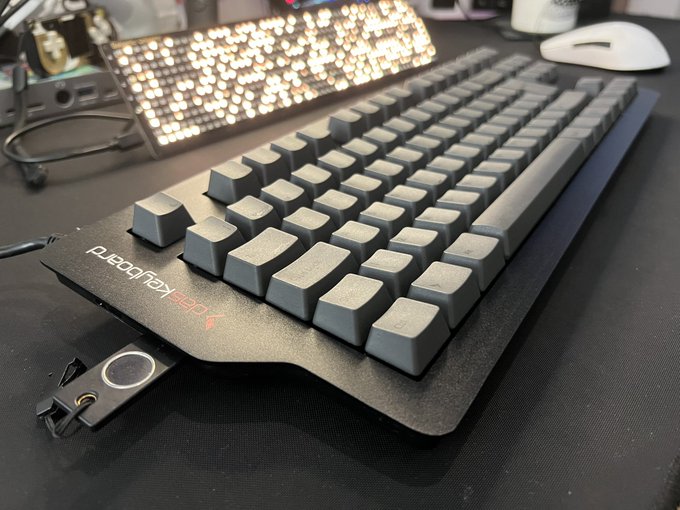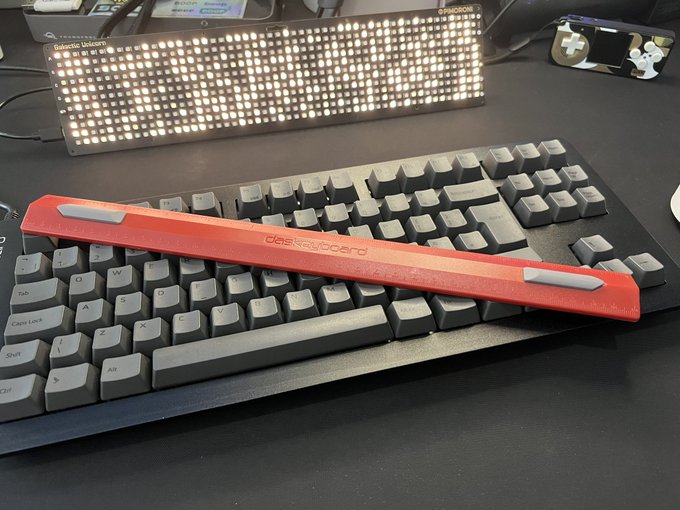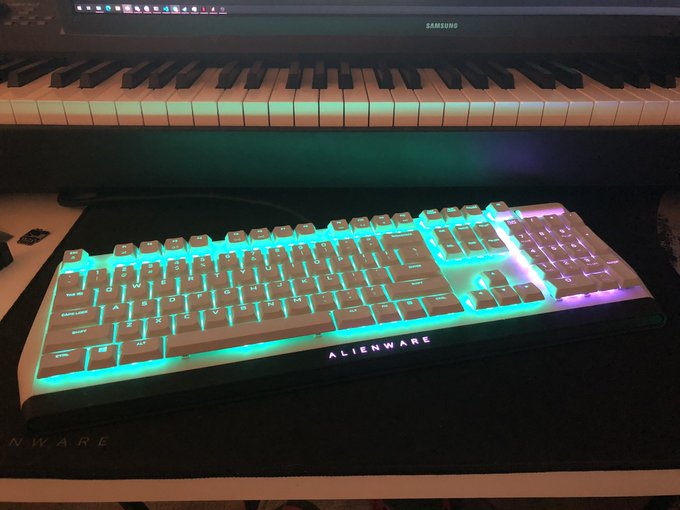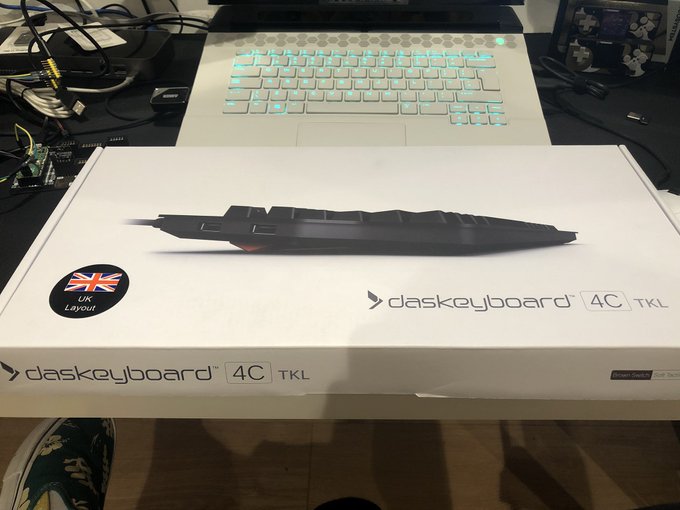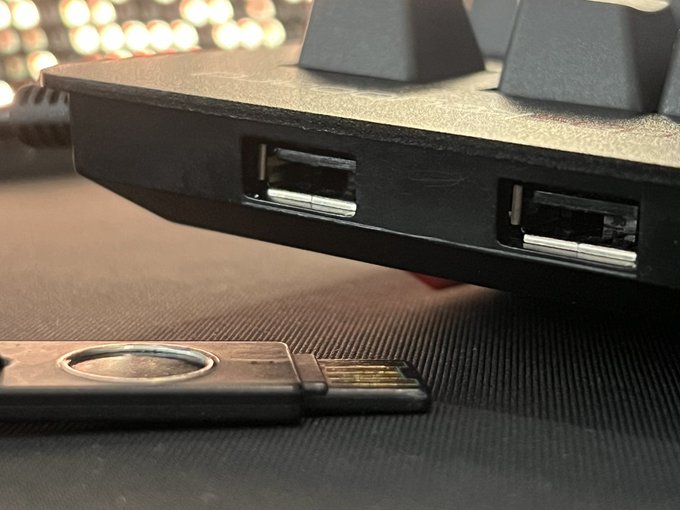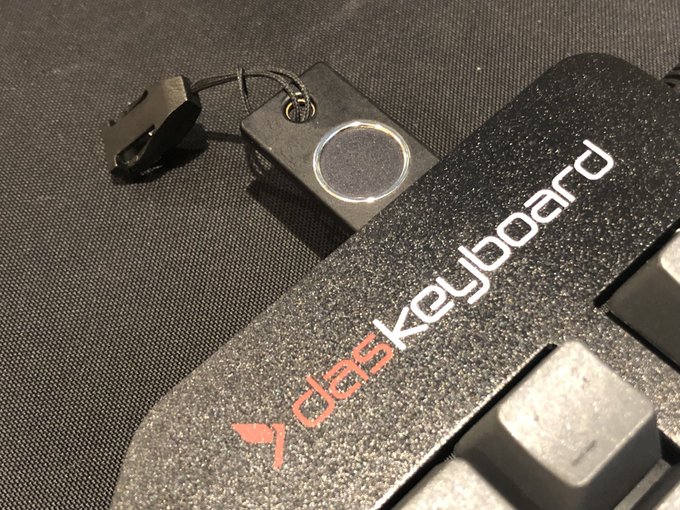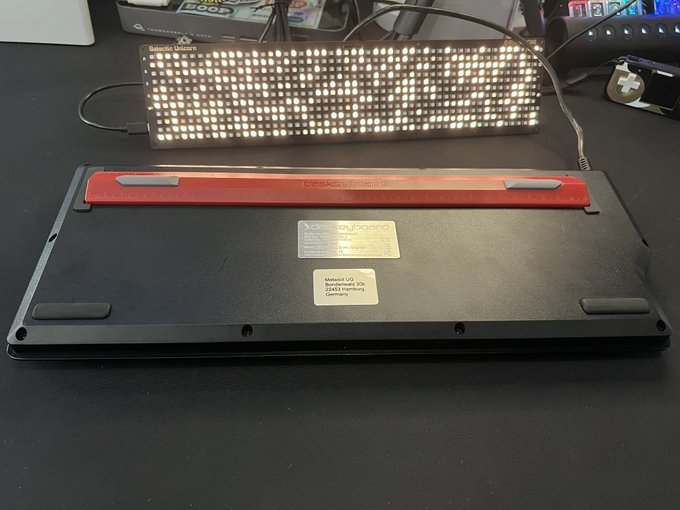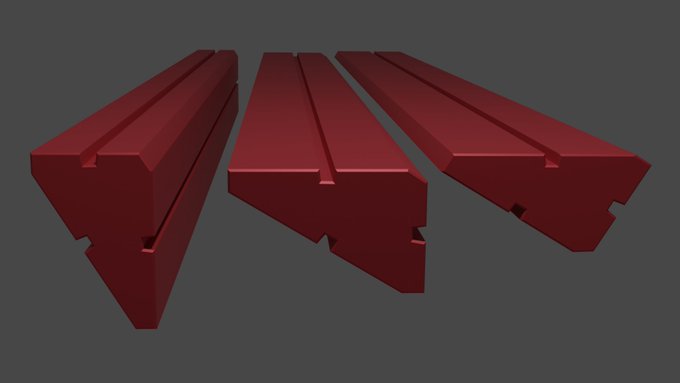Das Keyboard 4C TKL Reviewed
The Das Keyboard 4C TKL is a great programmer keyboard with an integrated two-port USB hub for your Yubikey and mouse. I don’t know how I lived without it.
The @daskeyboard 4C TKL in all its majesty! pic.twitter.com/M6Su1AIHzE
— Phil Howard (@Gadgetoid) October 13, 2022
But I did. For a few long months I’ve been using an official Raspberry Pi keyboard as my daily driver.
It’s… ok. It has a USB hub which is incredibly useful and seems to work rather happily from a single USB port (the specified limit of 500mA seems to be very fuzzy and soft with USB these days). On the downside key actuation force isn’t very consistent, and it’s prone to dust and gunge (food, okay, I’m busy, I eat over my keyboard, sue me!) causing the mechanism to jam somewhat. Suffice to say these issues have made it a little frustrating lately.
I have an Alienware keyboard (shown below) with LEDs and a USB port that I could be using. While it’s excellent for gaming it suffers from a few problems. It’s a US layout, which I can adapt to pretty easily, but which makes some programming more difficult than I’d prefer. It’s pretty large, and my desk space is at a premium. And, finally, it’s got a USB port (useful for a security key) but *doesn’t* have an integrated USB hub. Yep, it’s one of those weird contrivances with *two* USB-A plugs on the end. And USB ports are at an absolute premium in my setup- since it’s built around a Laptop. Grumble.
All my blog imagery goes through Twitter now so have this picture of a keyboard that I need. pic.twitter.com/hRqv0mv07D
— Phil Howard (@Gadgetoid) June 23, 2020
With these issues in mind, and the official Raspberry Pi keyboard as a sort of rough guide for what I wanted, I set about sleuthing for a suitable replacement.
A USB hub was a must, which instantly discounts many, many options. I wanted something in the “TKL” (ten key less, ie: it literally has ten fewer keys or no numpad if you will) form-factor which isn’t a huge ask. I also wanted something that would only use *one USB port. Aside from that I wasn’t precious- I work fine with membrane and/or mechanical, albeit the latter are certainly less prone to debris.
My search led me, at first, to the System76 Launch keyboard. The launch is an exceptional little programmable, illuminated, USB hub wonder that ticked all the boxes. However it’s expensive, near unobtanium and leans very heavily into being programmable/reconfigurable. Customisation is a bit of a non-feature for me- I don’t want the temptation. I picked a Herman Miller Cosm because it’s not adjustable, I pick pre-built computers because I just don’t care for building a custom, and I own classic-mini consoles because I’m too lazy to provision a Raspberry Pi for classic gaming and – in a staunch defiance of my peers – I use an iPhone. I barely tweak my .vimrc and I don’t have a bunch of Linux-customisation scripts checked into GitHub.
I write the software for programmable keyboards and macro pads so that everyone else can waste hours customising their workflow. I’ll suffer happily in a droll world of defaults.
It’s for these same reasons that you might – correctly – surmise that I have absolutely no inclination to custom build and/or customise a mech keyboard unless someone is paying me.
A little further sleuthing led my back to a brand I’d encountered before and which you’ve no doubt heard of… I mean, you read the post title, right? I talk of the no-nonsense, battleship-build Austin keyboard masters: Das Keyboard.
What caught my eye was Das Keyboard’s 4C TKL. It checked the right boxes: compact, USB hub, single USB-cable, no flashy unnecessary nonsense, and uh… still has letters on the keys because – I’ll be honest – I *don’t* touch type and I very occasionally have to look down to stop myself typing slightly shifted nonsense.
With my heart set on the 4C TKL I decided to roll the dice and see if Das Keyboard were foolish enough to chuck one my way. Spoiler: they were.
????? daskeyboard 4C TKL pic.twitter.com/hDoi1Uq0QB
— Phil Howard (@Gadgetoid) November 12, 2021
While we’re doing spoilers, here’s another: it’s a good, solid keyboard that exceeds my expectations. Surprised? I didn’t expect so. Das Keyboard have a reputation to live up to, and they certainly don’t disappoint with the TKL. Perhaps – you might venture – I’m easily pleased since I’m no mech connoisseur and who am I really to be judging such a keyboard if I don’t own fifty of the bloody things? Blah. You’re right, in a way- I don’t have the necessary experience to frame the Das Keyboard 4C TKL in the wider market of mech keyboards. I wont try. This review will cover my experience with the keyboard – now my daily driver, of course – and evaluate its merits in isolation.
First up:
Size
The 4C TKL is *considerably* smaller than my Alienware gaming keyboard. It’s also larger than the official Raspberry Pi keyboard. Whew, this is insightful stuff. The TKL form-factor has a rather significant advantage over smaller keyboard- it still has the home/end/pgup/pgdown/ins/del keys. This – it turns out – is more useful than I’d expected and – while I can’t remember what for – I found myself actually reaching for these exciting new keys. Furthermore the arrow keys – unlike virtually every laptop keyboard – are not mercilessly cramped into a corner. They are easy and accessible for navigating documents.
For a programmer this is good news- the keyboard is compact, but it can *breathe*. I’ve seen some… questionably small keyboards that seem to eliminate the F keys, home, arrow keys and virtually everything else in a quest for minimalism I can only assume is pursued by people who don’t actually use their computers and just want to minimize how much dusting they need to do.
You might joke that the 4C TKL is so small they had to stick a bulge on the left-hand side to fit the Das Keyboard logo. You’d be half right- this is actually where the USB hub is located and gives the keyboard a little character, which is a nice segue into:
The USB hub
Two ports- it turns out- is enough. This is one less than the official Raspberry Pi keyboard but I only ever really used two of them. Perhaps I was skeptical just how much USB I could get away with through a single cable.
Sweet sweet precious USB ports! pic.twitter.com/IPfFEAEhDl
— Phil Howard (@Gadgetoid) October 13, 2022
The hub being located on the left-hand side is a controversial choice. For me it means I can push the keyboard far back on my desk and gain some extra arm-leaning space. But, as a left-hander who never thought to put the computer mouse on the left-hand side and thus uses it on the right, I can appreciate why this might be a show-stopper for some. A USB-dongle-mousing-area-intrusion would be a very unfortunate thing indeed and with no corresponding right-hand version of this keyboard I’ll forgive you for discounting it altogether if you’re a fellow leftie who uses your peripherals in relatively close proximity. Of course USB ports sticking out the side is fairly analogous to using a mouse with a laptop, and if you can handle that… you can maybe handle this.
It’s @daskeyboard and @Yubico in perfect harmony! pic.twitter.com/Pb6z6J1YKo
— Phil Howard (@Gadgetoid) November 12, 2021
The USB hub reliably gives me somewhere to stick my Yubikey Bio. It also works fine with my headphone dongle plugged in alongside the Yubikey, but I tend to keep it free for USB flash drives instead. (I have some spare ports on my laptop for the headphone dongle… it’s Bluetooth if you must know, but since the dongle is *always* paired with the headphones it’s easier to tote that around than constantly re-pair my laptops.)
The USB ports are *generously* spaced apart, leaving plenty of room for dongles, SD card readers and other chonky peripherals.
The hub is, however, only USB 2.0 so you’re best left to thing like Yubikeys and/or a wireless mouse dongle if you’re into that sort of thing.
Build Quality
The 4C TKL is built like a battleship. I mean it looks like an aircraft carrier if you squint just right. The top deck is black anodized aluminium which affords a very robust and professional look. The rest of the keyboard is plastic but at a price of around £120 – at time of writing – this is very much to be expected.
Rock solid metal build ? pic.twitter.com/OUWcZQwFLN
— Phil Howard (@Gadgetoid) October 13, 2022
The keys themselves are… fine… there’s a little hint of injection mould flashing but nothing concerning. The black on dark grey colour scheme makes the text almost subliminal in low-lighting. About as close as you can get to the blank keys that Das Keyboard made their name with, without actually being… y’know… blank. I’m a glance-and-peck typist still!
It’s a fairly hefty keyboard but the optimised for durability design is more than welcome. Das Keyboard have even optimised out adjustable feet and instead opted for The Footbar…
The Footbar
Das Keyboard have made the rather controversial design choice of including a “footbar”-cum-ruler in lieu of adjustable plastic feet. This is a clever little ruler-shaped (albeit a little more chonky than your traditional ruler) plastic bar with inlaid rubber feet. So reminiscent of a ruler, in fact, that Das Keyboard added centimetre markings so you’d have a use for the bar if you don’t stick it underneath your keyboard. Clever, but who doesn’t have a rul… *checks* well, me, apparently.
Should you choose to use it to raise your keyboard, the footbar snaps magnetically into place on the bottom. It’s coloured a contrasting, bright red which… is fine, I guess! It’s certainly on brand and I can’t fault them for having a little fun with it.
In practise this means that the 4C TKL keyboard only supports one additional height level on top of the flat-on-the-desk default. This may be an issue to those who prefer a steeper typing angle, but it’s an ingenious way to remove the fiddley complexity, and potentially fragile construction of adjustable, fold-out legs.
A slightly more clever approach would have been to make the footbar with a more pronounced a triangle profile with rubberised feet along each edge. This would have given it three possible rotations that it could be magnetically snapped into place and – consequently – three different angle adjustment options in one, unbreakable bar.
@daskeyboard slightly better than my terrible sketches.
A three angle, three position, keyboard footbar!
Yes the corner angles are off and it needs rubber feet but you get the idea ? pic.twitter.com/cP88hyZwQW
— Phil Howard (@Gadgetoid) December 6, 2021
Fortunately the elegant simplicity of the footbar makes adjustment something 3D-printer twitter could solve in a pinch. A couple of neodymium magnets printed into a wedge of your precise specifications would yield the perfect angle adjustment.
Me? Well… see above. I don’t care for customisation and I have a very tenuous relationship with the adjustable feet on keyboards. I like what Das Keyboard have done here, even if I think they could have doubled up on the available angles. If more precise angle adjustment matters to you- and you don’t want to print yourself an alternate footbar- then the 4C TKL might be a miss!
Overall
In conclusion the Das Keyboard 4C TKL is a compact, solid, no-nonsense mech keyboard that’s perfect for people who want good key response, but don’t want to care about all the gooey details that make mech keyboards a hobby rather than a productivity tool. The lack of gimmicks – LEDs, let’s face it I’m a sucker for them but they’re mostly superfluous – and the presence of a useful, two-port USB hub keep it down to earth, grown up and sensible. It wouldn’t have historically been my first choice, but now it’s perfect for me!
The solid footbar is almost perfect- doing away with breaky, collapsy, awful folding feet- but could have used a second bar thickness or another method to gain more adjustment angles.
If a well-built, compact, no-frills mechanical keyboard with USB ports is what you’re after- this is it.

